[ad_1]
One of the joys of keeping tropical fish is their exciting and diverse range of behaviors.
While some fish love to hover around at the surface, others spend their time at the bottom of the aquarium and will even dig vigorously in the sand or gravel.
There can be different reasons for your fish digging into the sand substrate. They could be looking for food, or digging a pit to lay their eggs in.
Here we’ll look at 10 aquarium fish and invertebrates that love to spend their days and nights digging in the sand.
Kuhli Loach (Pangio kuhlii)
If I had to give a prize to the ultimate digging freshwater fish, it would probably have to go to the Kuhli loach. Kuhli loaches are so adept at digging that they’ll happily submerge themselves in the aquarium substrate for considerable lengths of time.
I once thought that my Kuhli loaches must have died when I didn’t see them for a long while, so I was amazed when I saw them show up again out of the blue several weeks later!
As well as digging simply to hide, Kuhli loaches also seem to dig in search of food. In the wild, they feed on mollusks such as snails, which might give us a clue as to what they’re searching for!
These mysterious creatures appear happy to dig and burrow in any kind of substrate, whether its sand or even medium-coarse gravel like I had in my setup.
Clown Loach (Chromobotia macracanthus)
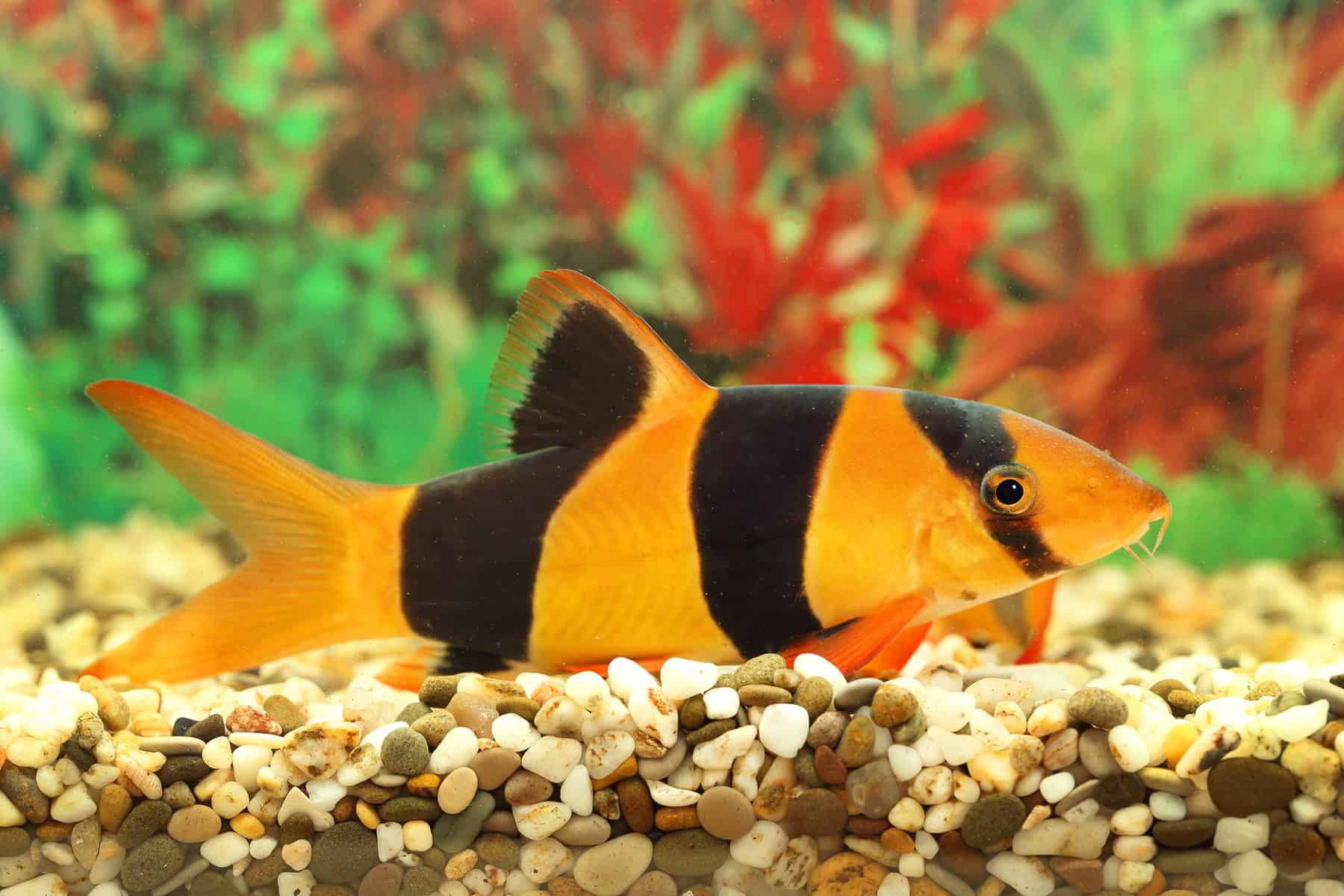
Some people claim that Clown loaches are so-called purely because of their clown-like black and orange colorations, but others would argue that their oddball behavior also contributes to their common name!
Clown loaches seem to love to entertain aquarium owners by swimming upside down and playing dead. But another intriguing behavior of clown loaches is their love of digging in the substrate.
For a fish that loves hanging out, motionless for hours on end, it can be surprising to witness the vigor and energy with which Clown loaches root about in the sand.
It’s as if there’s something incredibly tasty down there (perhaps a juicy snail?) that they just can’t wait to get their teeth into. Maybe there is, or maybe they just imagined it!
Clown loaches are long-lived, social fish and grow to much larger sizes than many people realize. You’ll need at least a 90-gallon tank to host three adults!
Corydoras Catfish (Corydoras spp.)

Corydoras catfish (affectionately known as cories in the trade) are one of the most popular of all bottom-dwelling aquarium fish. Their docile nature, modest requirements, and ability to keep an aquarium clean have made them a long-term favorite.
Cories are not such vigorous burrowing fish as some of the other species on our list, but they will dig and root around in a sandy substrate, especially if they think there is something tasty to eat down there!
An important thing to know about cories is that they need to be kept in schools. These social fish need the presence of several others of their species to feel safe and secure, so should never be kept in groups of less than six.
This means you’ll need a 10-gallon aquarium for the smallest Pygmy cory and Dwarf cory and a 20-gallon aquarium for larger types like Hognose cories and Bronze cories.
South American Cichlids
Many species of Central and South American cichlids such as Convict cichlids, Ram cichlids, Jack Dempsey cichlids, Oscars, and Firemouth cichlids will dig pits in the substrate, whether it’s fine gravel or sand.
One subgroup of South American cichlids have even been named after this behavior and are known as ‘earth eaters’!
While this may occasionally be to look for food, the main reason that cichlids dig pits is to lay eggs and look after their fry. If you see your cichlid gathering big mouthfuls of sand or gravel and then spitting them out somewhere else, the chances are they’re trying to make a nest.
Some species are such ardent diggers that they’ll dig all the way to the bottom of the tank before laying their eggs! A favorite place to do this is under a rocky cave – effectively making the cave even bigger.
The parents will guard their nest fiercely from other fish, and many species will even scoop up their young in their mouths and spit them back into the nest when they stray too far from home. What devotion!
African Cichlids
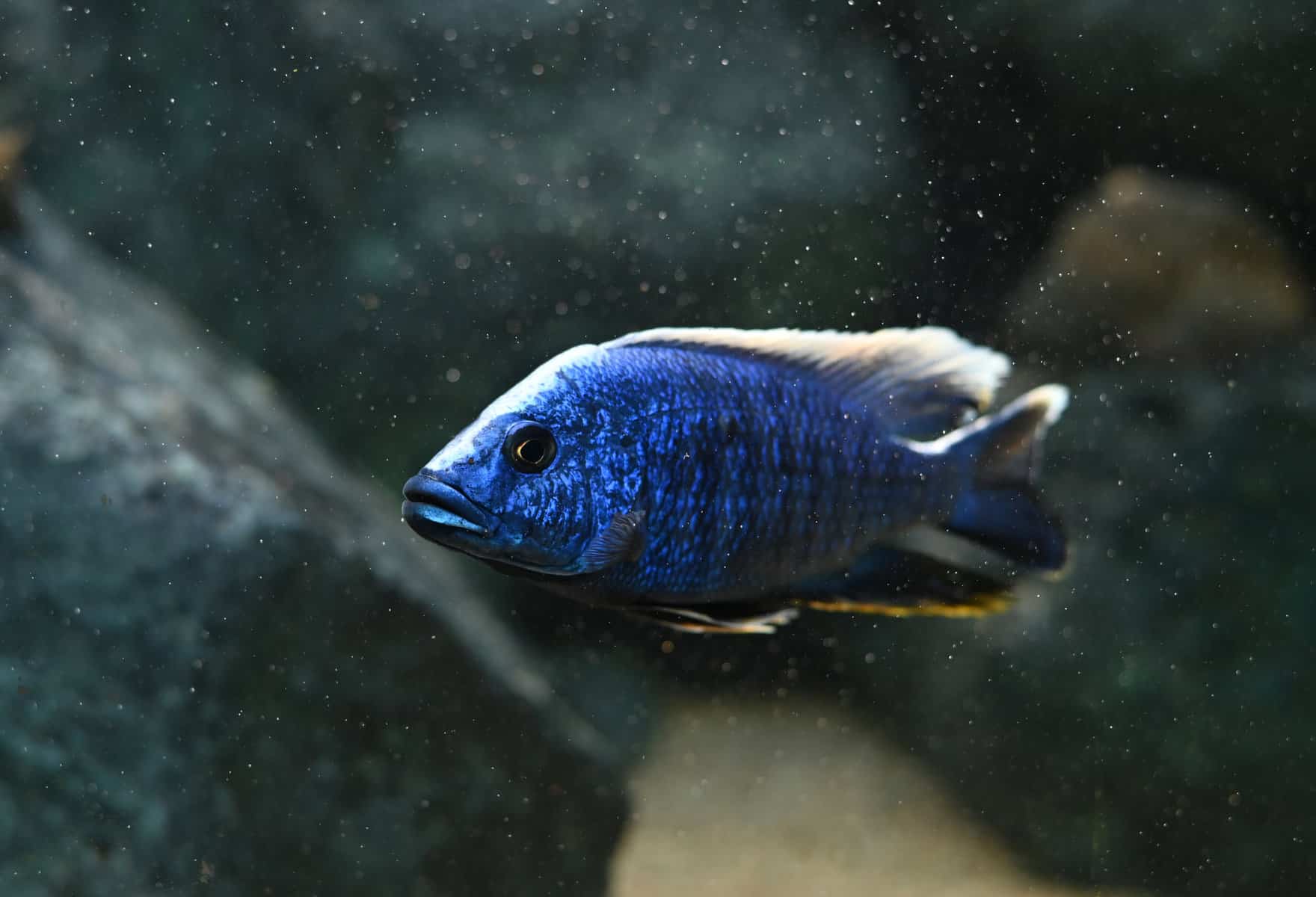
Just like their South American cousins, African cichlids will sometimes dig in the substrate, too.
But while South American cichlids are typically kept in male-female pairs or mixed groups, their African counterparts are often kept in all-male groups to reduce aggression.
So instead of digging functional pits ready for spawning, solo male African cichlids are basically digging in the hope that it’ll attract a female to swim by and fall head over heels in love with him!
This rather lonely behavior is the sad fate of any male cichlid kept alone for life, but there are some African cichlids that you can breed peacefully at home, too!
Shell-dwelling cichlids from Lake Tanganyika are smaller and more docile than other species and while they still love to dig, they won’t try to kill other fish that approach their nest!
Incidentally, the biggest difference between keeping African and South American cichlids is their water requirements. While South American species need soft, acidic water, African cichlids need hard, alkaline water to thrive.
Freshwater Sunfish (Centrarchidae Spp.)
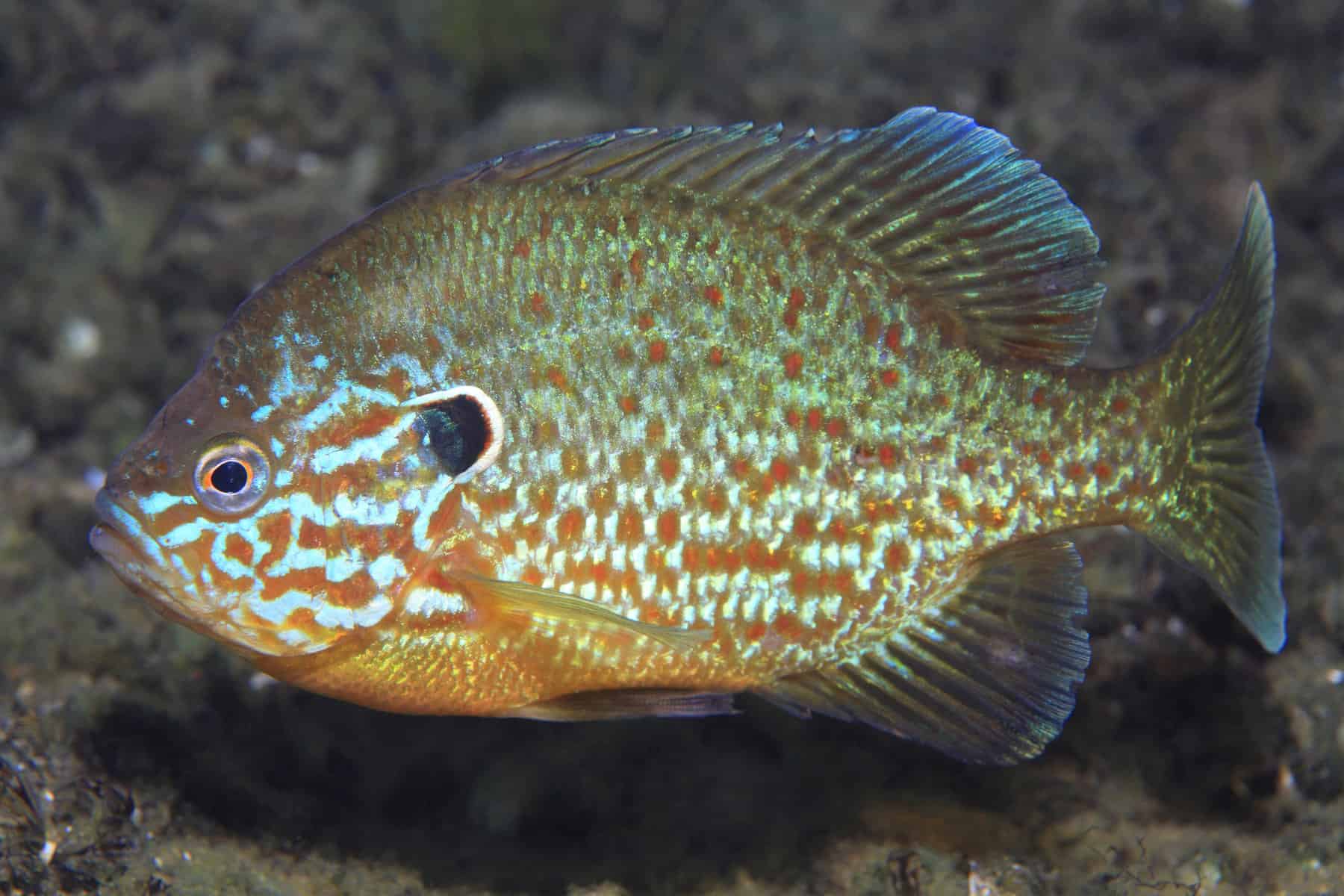
Freshwater sunfish are closely related to cichlids and exhibit the same digging behavior as their relatives. Just like cichlids, sunfish usually dig pits when they’re preparing for breeding.
While sunfish are often kept in garden ponds, they’re less popular as aquarium pets. Many species prefer cooler temperatures than tropical fish, meaning it’s not always easy to find suitable tank mates for them.
Sunfish are also susceptible to bacterial infections and other diseases when kept in less-than-ideal conditions. Nevertheless, they are beautiful fish and some aquarists have had lots of fun keeping them.
Goldfish (Carassius auratus)
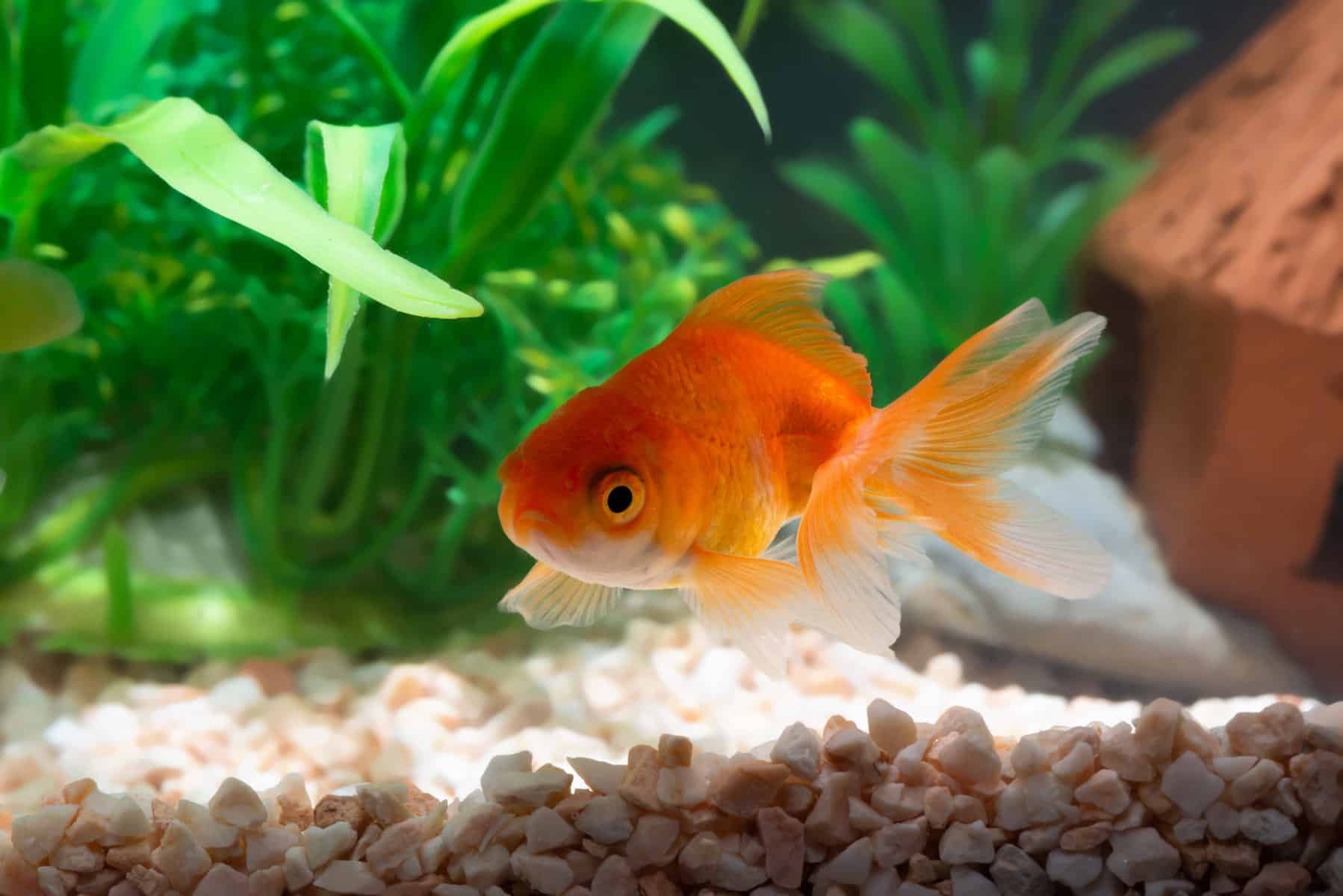
Goldfish are a species of carp, and most carp love to dig!
Goldfish are notorious for digging up their substrate which is one of the reasons that it’s so difficult to keep plants with them!
But because goldfish are such messy fish, I wouldn’t normally recommend keeping them in a tank with sand in the first place.
Aquarium gravel provides a greater surface area than sand for beneficial bacteria to make their homes and do their jobs of transforming harmful toxins like ammonia and nitrites into nitrates.
Gravel is also less easy to stir up, so your water will be kept clearer when your goldfish goes on another one of its digging forays!
Malaysian Trumpet Snails (Melanoides tuberculata)
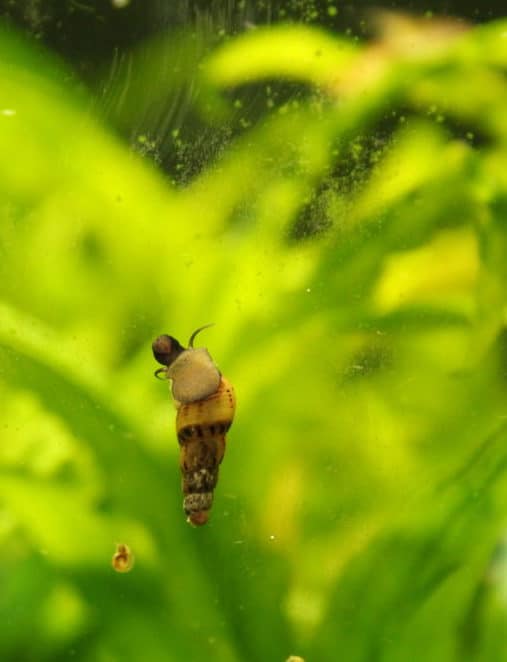
Okay, okay, aquarium snails are definitely not fish, but they make our list because some species love to dig!
Malaysian trumpet snails (sometimes abbreviated to MTS) are especially famous for their digging antics, and will often completely bury themselves for the entire day under sand or gravel. It’s when you switch the aquarium lights out that they’ll emerge from their burrows, cleaning the aquarium of uneaten food and algae.
The burrowing instincts of the Malaysian trumpet snail have made them popular with some aquarium owners who’ve noticed that the burrowing helps to release trapped debris and gasses from festering in the substrate.
The only drawback (and it is a big one!) with Malaysian trumpet snails is that they breed prolifically. This means that a few snails can quickly turn into a few hundred and overrun your aquarium. That might easily be enough to make you look for another type of snail…
Nerite Snails (Vittina Spp.)
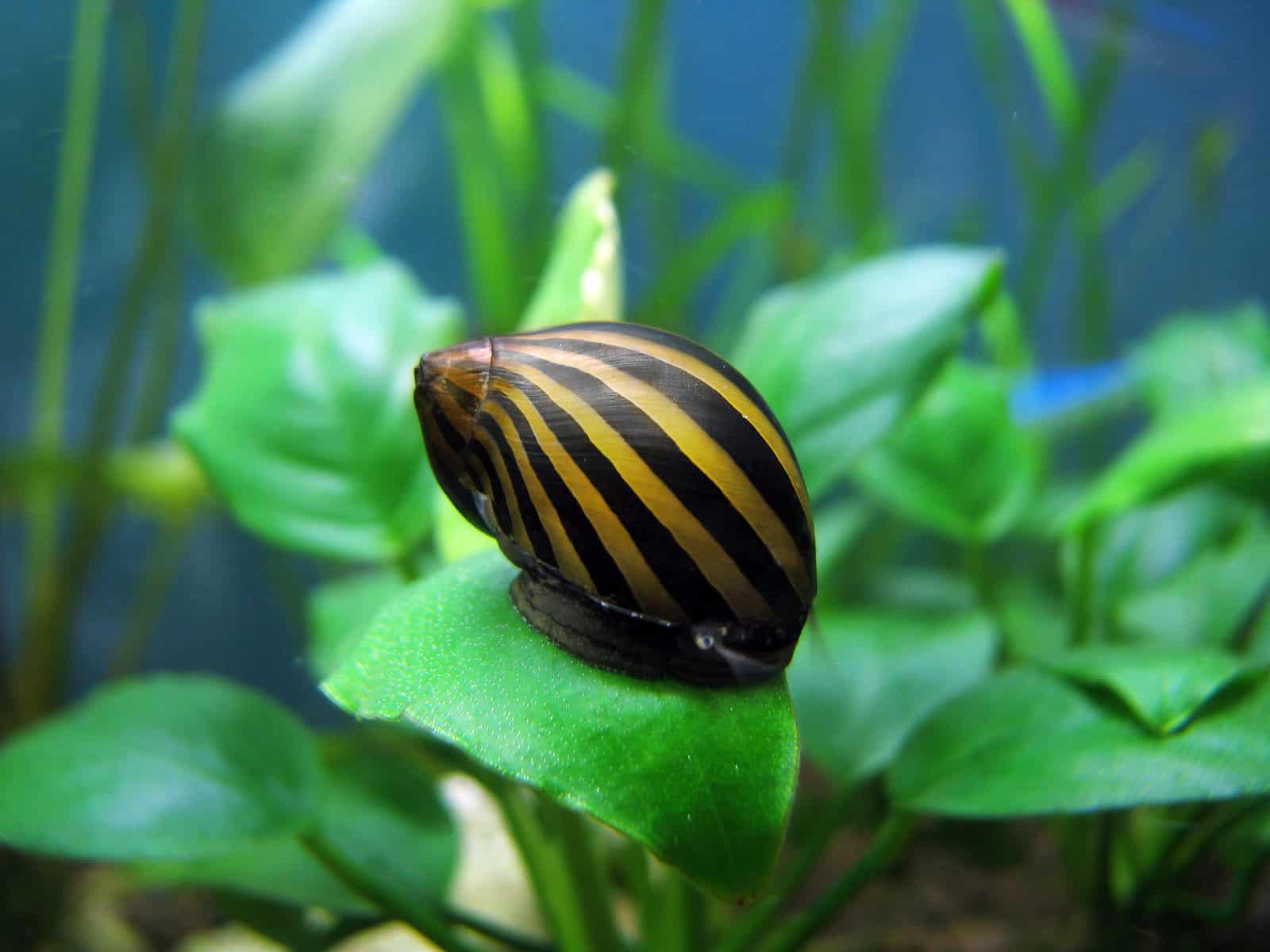
Now nerite snails are not quite as famous for burrowing into sand and gravel as their Malaysian relatives, but they do like to dig in the substrate from time to time, too.
The great advantage that nerites have over most other aquarium snails is that they don’t breed in freshwater. This guarantees that your fish tank will never become overwhelmed by them.
Besides that, nerite snails might just be the most highly esteemed algae eaters of any aquatic snail, earning their keep by keeping your glass and aquarium décor squeaky clean!
If you do wish to keep nerite snails for long, you’ll need to avoid keeping fish that might eat them! That includes some of those mentioned above, and we’ve made a dedicated article on fish that eat snails here!
Aquarium Crayfish
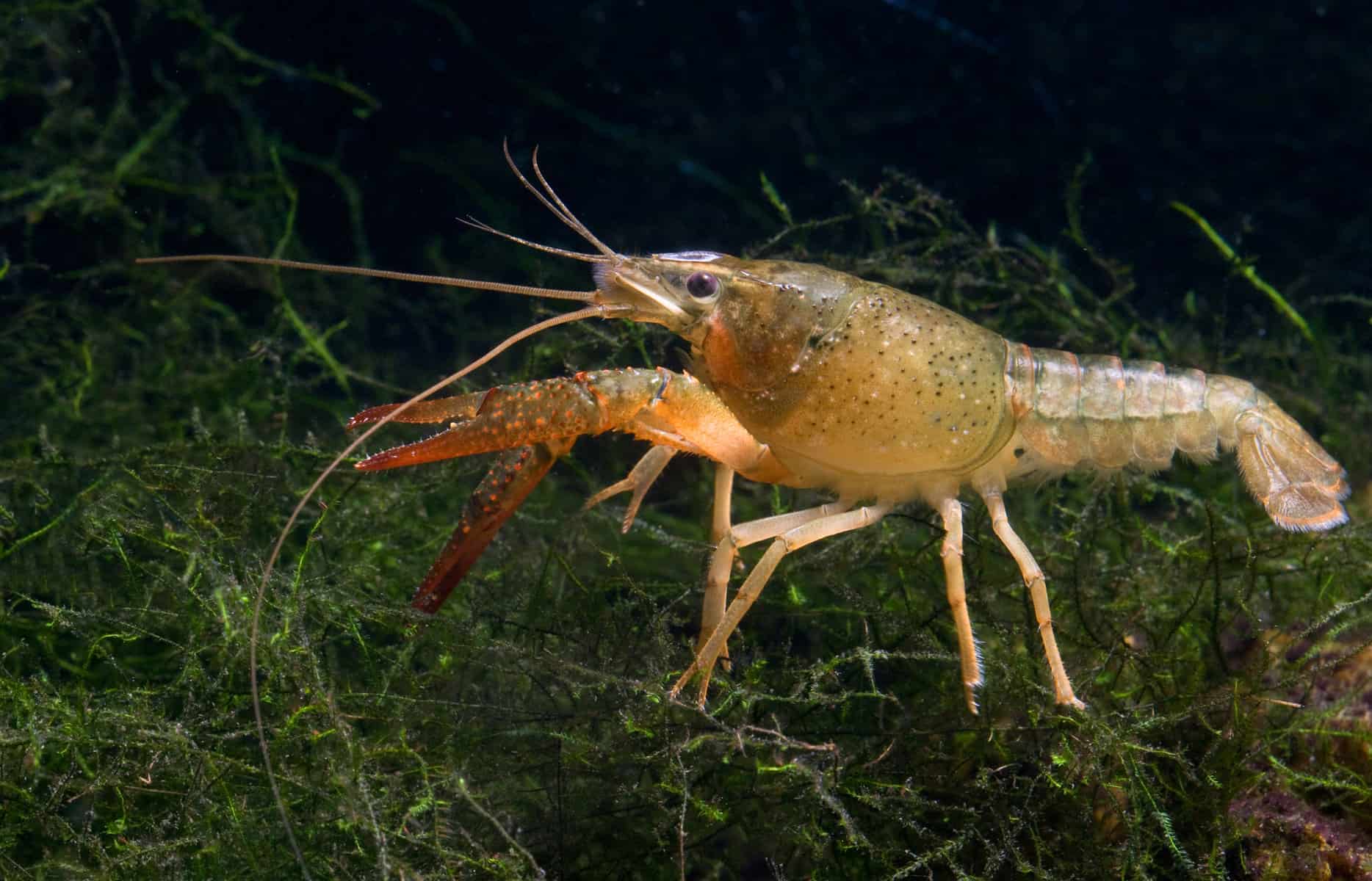
Our final sand-digging fanatic is the crayfish. There are many types of crayfish that you can keep in freshwater aquariums – you can check out our top 7 in our article here.
Crayfish have varying personalities according to their species. While some of them are content hiding in caves, others, such as the Blue crayfish (aka. Everglades crayfish, Florida crayfish), prefer to dig in the substrate, and aquarium sand is very useful to help them perform their natural behavior.
These digging species may spend most of their time submerged in their burrows, only coming out at night in search of food. They’re especially likely to spend lots of time under the sand when molting or preparing to lay eggs.
Digging Fish FAQs
Which Live Plants Can I Grow in Aquarium Sand?
Growing aquatic plants in aquarium sand can often be more tricky than with gravel. Sand becomes compacted which leads to poor root growth and some fish (as you now well know!) that like to dig in the sand may dig them up.
If you’re having trouble growing plants in aquarium sand, don’t give up! Try instead some tough aquarium plants like Java fern, Java moss, or Anubias that you can tie up to a rock or piece of driftwood to keep them safe.
How Do I Stop Sand From Getting Stuck in My Filter?
When digging fish stir up your aquarium sand, it can lead to clouds of sand being thrown up into the water column and clogging up your filter.
You can help to prevent this by locating the intake of your filter as near the surface of the tank as possible, where sand particles are least likely to go.
Also, consider dispersing the output flow of your filter so that the sand doesn’t keep circulating around the tank, but can settle back down.
Aquarium spray bars and lily pipes are excellent for this purpose.
[ad_2]
Source link
